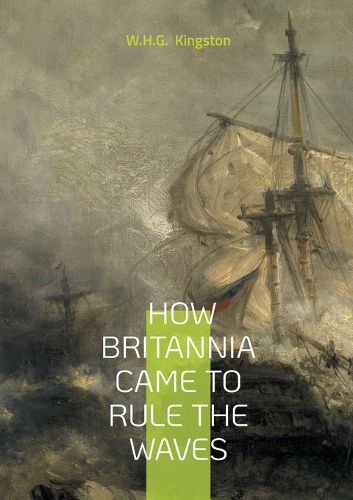Readings Newsletter
Become a Readings Member to make your shopping experience even easier.
Sign in or sign up for free!
You’re not far away from qualifying for FREE standard shipping within Australia
You’ve qualified for FREE standard shipping within Australia
The cart is loading…






This title is printed to order. This book may have been self-published. If so, we cannot guarantee the quality of the content. In the main most books will have gone through the editing process however some may not. We therefore suggest that you be aware of this before ordering this book. If in doubt check either the author or publisher’s details as we are unable to accept any returns unless they are faulty. Please contact us if you have any questions.
How Britannia Came to Rule the Waves by W.H.G. Kingston chronicles the remarkable ascent of British naval dominance from primitive coracles to the mighty steam-powered fleets of the Victorian era this comprehensive British naval history traces technological innovations strategic triumphs and cultural traditions that forged the Royal Navy's evolution into the world's preeminent maritime force The narrative begins with Britain's ancient seafaring roots examining archaeological evidence of early Celtic and Saxon vessels Kingston debunks myths about primitive British boatbuilding showing sophisticated shipcraft predating Roman invasion the core chapters analyze pivotal developments including King Alfred's revolutionary 9th-century warships the medieval Cinque Ports system and Tudor breakthroughs in naval artillery Key highlights include: Detailed analysis of Anglo-Dutch wars that established permanent naval doctrine Nelson-era innovations in fleet tactics and officer training The 19th-century transition from sail to steam and ironclads Little-known customs like Neptune ceremonies tracing back to Phoenician traditions What distinguishes this Victorian military history is Kingston's firsthand expertise as a maritime writer he illuminates how weather forecasting methods victualling systems and press gang operations all contributed to Britain's maritime supremacy the final chapters explore emerging steam technology while preserving nostalgic accounts of sailing ship heroics.
$9.00 standard shipping within Australia
FREE standard shipping within Australia for orders over $100.00
Express & International shipping calculated at checkout
Stock availability can be subject to change without notice. We recommend calling the shop or contacting our online team to check availability of low stock items. Please see our Shopping Online page for more details.
This title is printed to order. This book may have been self-published. If so, we cannot guarantee the quality of the content. In the main most books will have gone through the editing process however some may not. We therefore suggest that you be aware of this before ordering this book. If in doubt check either the author or publisher’s details as we are unable to accept any returns unless they are faulty. Please contact us if you have any questions.
How Britannia Came to Rule the Waves by W.H.G. Kingston chronicles the remarkable ascent of British naval dominance from primitive coracles to the mighty steam-powered fleets of the Victorian era this comprehensive British naval history traces technological innovations strategic triumphs and cultural traditions that forged the Royal Navy's evolution into the world's preeminent maritime force The narrative begins with Britain's ancient seafaring roots examining archaeological evidence of early Celtic and Saxon vessels Kingston debunks myths about primitive British boatbuilding showing sophisticated shipcraft predating Roman invasion the core chapters analyze pivotal developments including King Alfred's revolutionary 9th-century warships the medieval Cinque Ports system and Tudor breakthroughs in naval artillery Key highlights include: Detailed analysis of Anglo-Dutch wars that established permanent naval doctrine Nelson-era innovations in fleet tactics and officer training The 19th-century transition from sail to steam and ironclads Little-known customs like Neptune ceremonies tracing back to Phoenician traditions What distinguishes this Victorian military history is Kingston's firsthand expertise as a maritime writer he illuminates how weather forecasting methods victualling systems and press gang operations all contributed to Britain's maritime supremacy the final chapters explore emerging steam technology while preserving nostalgic accounts of sailing ship heroics.